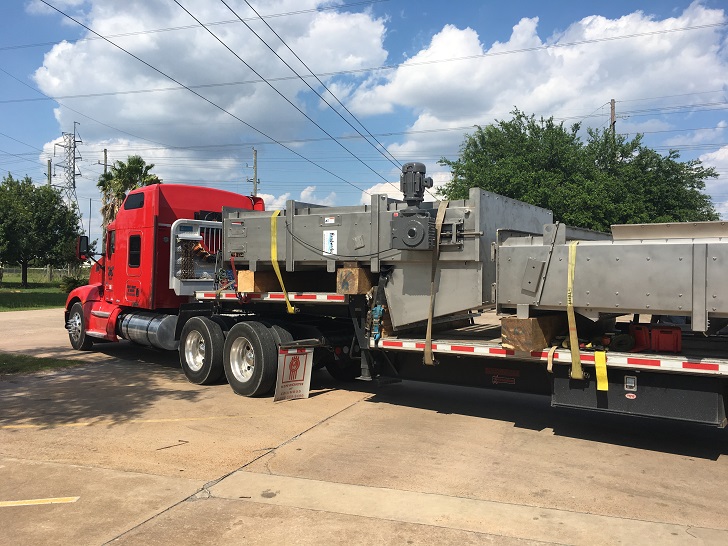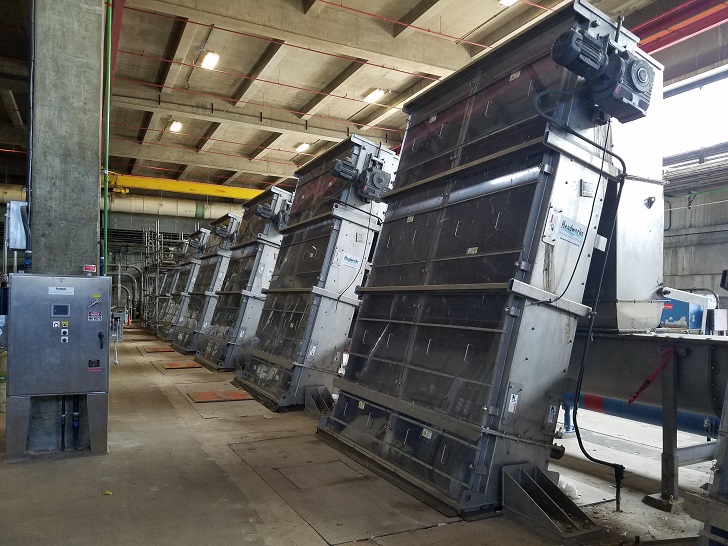

The Hyperion water reclamation plant (WRP) in Los Angeles is one of the most advanced wastewater treatment plants in the world. When the old screens were upgraded, it chose an international wastewater treatment specialist to provide new screening equipment.
Headworks International is a provider of advanced wastewater treatment processes and equipment for municipal and industrial facilities around the world. It has been engaged in the design and manufacture of robust screens and screenings' handling equipment for more than 25 years. The screens are used to remove debris from wastewater during the preliminary treatment phase.
Largest US WWTP The Hyperion WRP is in south west Los Angeles next to the Dockweiller State Beach on Santa Monica Bay. It began as a simple screening plant in 1925 and today the plant is considered one of the largest wastewater treatment plants in the world. In the US, the plant is the largest, by volume, west of the Mississippi River. Hyperion WRP reclaims 250 mgd (950,000 m3/day) per day of wastewater. Although the plant is not the first to reclaim its wastewater, it is the first to do it on such a large scale. The operators of the Los Angeles plant demand that the equipment and systems they specify for their plants must work dependably while being robust enough to cope with the work that such large plants must deal with day-in and day-out with low life-cycle costs.
Their goal is to efficiently reclaim for reuse as much of the municipality’s wastewater as possible, which is the reason for its reputation as one of the most forward-thinking wastewater treatment facilities in the world. Headworks’ commission As Headworks International’s installation base and its reputation grew across the US, Los Angeles, like many other cities, began to take notice of the specialist design of the Headworks Bar Screen. Los Angeles City authorities purchased the first four units for their Tillman plant 12 years ago, followed by two more units to improve their plant at Terminal Island. In 2016, when Hyperion WRP started planning to have its ageing and difficult to maintain old fashioned climber-type screens upgraded, Headworks was named as the sole source for the new screening equipment for the project.
Headworks worked closely during 2017 and 2018 with the City’s selected contractor, the Murray Company and delivered eight new bar screens to the Hyperion WRP. This included four MS1 Series Bar Screens with ¾ in Bar Spacing and four MS1 Series Bar Screens with 3/8 in Bar Spacings, along with a Sluice Trough, Slide Gates and Diverter Chutes. Robert Nicol, foreman of the Murray Company, Hyperion WRP project contractor, said: “The equipment works so well that the plant is in awe of what it pulls out. Way more than before.”
Screen installation Headworks provided the screens in pairs for installation with each pair having one screen with ¾ in (19 mm) Bar Spacing and the other having 3/8 in (10mm) Bar Spacing. The Bar Screens are installed in 10 ft wide x 14 ft deep channels, each designed for a maximum flow of 133 mgd (500,000 m3/d). The new Sluice Trough collects the screenings discharge from all the Bar Screens for distribution to two different solids’ handling processes at the plant.
The Sluice Trough is 170 ft (52 m) long with a conveying flow of approximately 900 gpm (3,300 lpm). In addition to the regular flow coming to the plant, solids collected from other Los Angeles WWT plants are collected and pumped to Hyperion WRP for final removal and treatment. These solids travel for many miles underground across Los Angeles.
Headworks says it is proud to have been selected to provide its gold standard MS Series Bar Screens for their screening needs. Headworks co-founder and senior vice-president, Gerald Seidl, visited the screens in action recently and created a short video of the facility, which is now available on YouTube.




